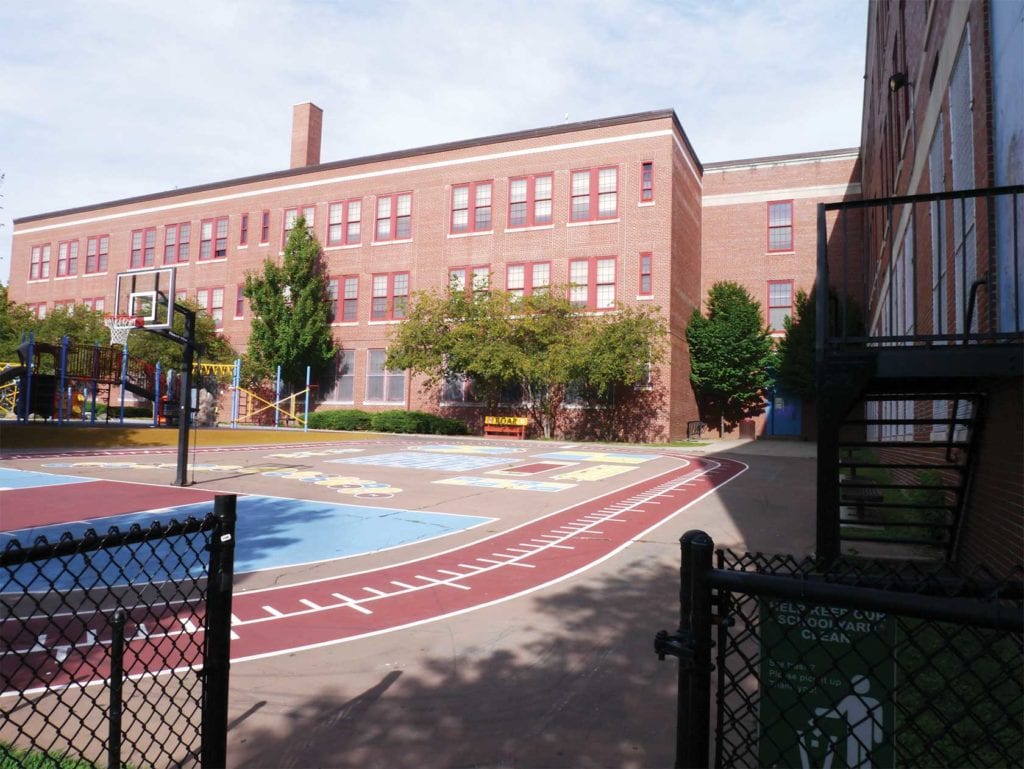Segregation on rise in Massachusetts schools
Study shows increasing concentrations of Blacks, Latinos in many local schools

Schools in predominantly Black and Latino neighborhoods in Massachusetts are becoming more intensely segregated, even as the state’s population is becoming more diverse, according to a new study released in August.
The study, commissioned by the Center for Education and Civil Rights and the Beyond Test Scores Project, found that the number of intensely segregated predominantly white schools in Massachusetts has declined sharply over the last 11 years, from 619 in 2009 to 173 in the 2019-2020 school year. That decrease comes as increasing numbers of Black, Latino and Asian families have enrolled their children in schools throughout the state.
But in the same time period, the number of intensely segregated majority Black and Latino schools in Massachusetts has increased from 146 to 192 — a trend that signals a rise in the segregation of high-poverty students in districts across the state.
Jack Schneider, a University of Massachusetts Lowell professor who worked on the report, points to what he says is the stigmatization of children of color as a root cause for increasing school segregation in Massachusetts schools and schools across the country.
“We have effectively stigmatized kids of color in this country,” Schneider said. “We made kids of color seem both ineducable and threatening. Neither is true.”
At the same time, Schneider says, an increased ethos of competition has also permeated American culture, from the so-called Varsity Blues scandal in which wealthy parents paid bribes to gain their children admittance to competitive universities to the intense competition for seats in Boston’s exam schools.
“Education is not a dog-eat-dog, winner-take-all competition for limited resources,” Schneider said.
Boston, Worcester and Springfield account for 12.1% of the state’s schools, but 51% of the intensely segregated schools in the state.
Segregation in Boston
In Boston, white students make up just 14.9% of the Boston Public Schools (BPS) student population. Latinos are 42.4%, Blacks are 30% and Asians make up 9%. While there are schools where the white population is 2% or less, such as the King K-8, the David A. Ellis Elementary School and the Higginson, there is an increasing number of schools in affluent areas of the city where it is much higher — such as the Eliot School in the North End, where the white student population is 59.7%.
In a 2018 review of Boston enrollment data, the Boston Globe found that nearly 60% of the city’s schools are intensely segregated — with students of color making up at least 90% or more of the student body — up from 42% 20 years earlier.
Boston came under court order to desegregate its schools decades ago after the NAACP Boston Branch sued the School Committee for violating the state’s Racial Imbalance Act. The resulting 1974 desegregation order remained in effect until the district dropped racial makeup guidelines from its assignment system in 1999.
In 2013, the district dropped its three-zone student assignment system, in which families could pick elementary and middle schools anywhere within the large geographic zone in which they lived. In its place, the district implemented a “home-based” model, under which students are given a choice among the schools closest to their home address.
The move came after years of advocacy from former Mayor Thomas Menino, white city councilors and white parents in Boston.
Although BPS officials then committed to yearly updates on how the home-based plan affected students’ access to high-ranked schools, they so far have released just one: a Boston Area Research Initiative in 2018 that found that the plan led to higher concentrations of whites and Asians in some schools and decreased access to schools ranked high in the district’s rating system for Black and Latino students.
Competition for resources
Schneider said there is a national trend of increased segregation driven by white parents’ competition for school resources.
“White parents believe they need to get their children into the best schools and that the best schools are going to have the lowest numbers of kids of color,” he said.
In Boston, Black parents’ fights for integration in the 1850 Roberts v. City of Boston lawsuit and the 1972 Morgan v. Hennigan lawsuit were based on their desire to obtain greater educational resources for their students.
“For black families, desegregation was truly about adequate funding, quality facilities and instructional materials,” said NAACP Boston Branch President Tanisha Sullivan.
Author Rucker Johnson, whose 2019 book “Children of the Dream” shared the findings of his study on the effects of desegregation on Black and white students, found that Black students in integrated schools had smaller class sizes and received more per-pupil funding than those in segregated schools.
Sullivan argues that integrated classrooms have a societal value beyond equitable distribution of resources.
“Learning in a school building is more than what you read or what you study,” she said. “I believe that a learning environment, especially among younger children, is enriched by having diversity in the classroom.”
In the school funding formula Boston currently uses, schools are funded on a per-pupil basis, a system designed to be more fair than in past years, when a school community’s political clout could influence funding. Students with special needs such as English language learners receive more funding than the average student.
Yet parent activists say inequalities persist in the Boston system, with low-income students and English language learners concentrated in schools that are often penalized for the lower scores their students earn on standardized tests.
Because white families in Boston typically earn more than Black or Latino families, parent fundraising for enrichment activities such as music and sports is also unevenly distributed.
In the downtown Boston zip code 02111, where the Josiah Quincy School is located, parents donated an average of more than $120 per student through the website Donors Choose in 2016, according to an analysis by BPS parent Kristin Johnson. The funding provided through the website typically goes toward providing basic instructional materials not provided by the district, such as photocopy paper, pencils and notebooks for students.
In that same year, parents in the Roxbury zip code 02119 donated less than $20 per student. Many schools that requested funds received nothing, Johnson noted in her 2016 blog.
“As we browsed through the open asks in DonorsChoose, we noticed that many projects expire unfunded, while requests from schools supported by more affluent parents are often quickly completed,” she wrote.
Sullivan says desegregation remains the most reliable way to ensure equity in school funding.
“Despite what the district may do with equitable funding, white schools will always have more resources,” she said.
Sullivan acknowledges, however, that her view is not in line with much of Boston’s political leadership.
“We have to acknowledge that this city never wanted integration,” she said. “That’s why we ended up with a court order to desegregate.”
For now, there are no efforts underway to promote integration in Boston’s schools. But Schneider argues there should be, despite the broader push toward segregated schools.
“At the end of the day, the burden really lies with white people,” he said. “Public schools are not private schools. They’re something that belong to all of us and should serve all of us.”







